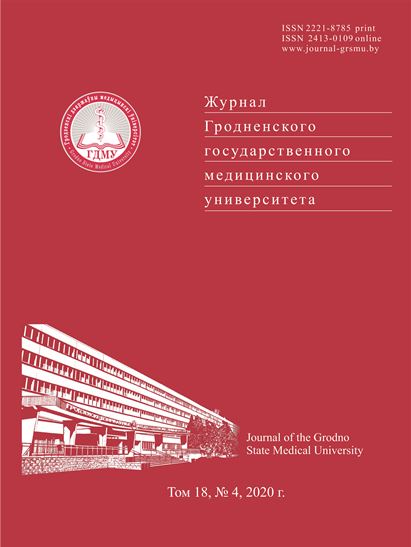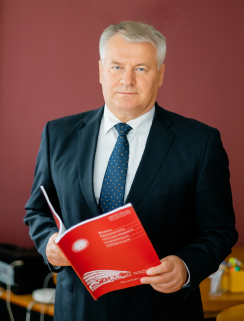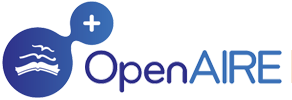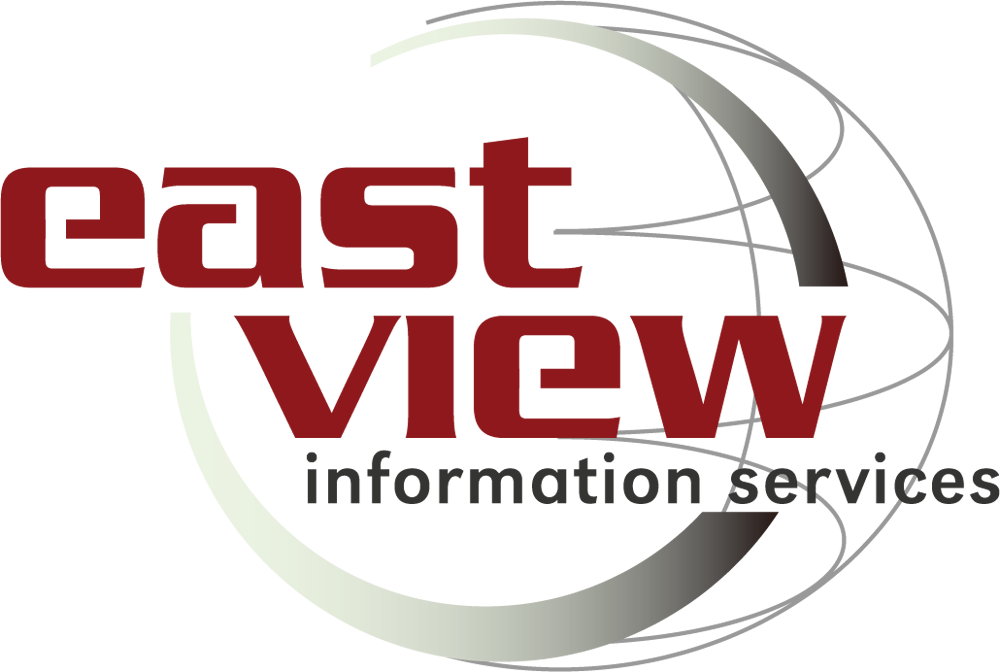ЛЕЧЕНИЕ НЕДЕРЖАНИЯ МОЧИ ПРИ НАПРЯЖЕНИИ У ЖЕНЩИН СТВОЛОВЫМИ КЛЕТКАМИ

Аннотация
В западных странах примерно 15% всех женщин страдают недержанием мочи при напряжении. Заболеваемость значительно выше среди пожилых – более 25% пожилых женщин страдают этим заболеванием. Если такие методы лечения, как физические упражнения, лекарственные препараты или электростимуляция сфинктера, не восстанавливают удержание мочи, может быть применена клеточная терапия для улучшения функции сфинктера уретры. Развитие недержания мочи при напряжении у женщин связывают с нарушением структуры сфинктера уретры, обеспечивающего герметичность мочевого пузыря. Нарушение структуры сфинктера проявляется потерей мышечных клеток и замещением их соединительной тканью. В предлагаемом читателям обзоре кратко суммированы современные знания о стволовых клетках, применяемых для терапии недержания мочи: мезенхимальных стромальных клетках, стволовых клетках, полученных из мочи и мышечных сателлитных клетках; о совершенствовании методов хирургической навигации; инъекций клеток в мышцу сфинктера и перспективы, полученные из недавних доклинических исследований.
Литература
Subak LL, Brubaker L, Chai TC, Creasman JM, Diokno AC, Goode PS, Kraus SR, Kusek JW, Leng WW, Lukacz ES, Norton P, Tennstedt S. High costs of urinary incontinence among women electing surgery to treat stress incontinence. Obstetrics & Gynecology. 2008;111(4):899907. https://doi.org/10.1097/AOG.0b013e31816a1e12.
Markland AD, Goode PS, Redden DT, Borrud LG, Burgio KL. Prevalence of urinary incontinence in men: Results from the national health and nutrition examination survey. Journal of Urology. 2010;184(3):1022-1027. https://doi.org/10.1016/j.juro.2010.05.025.
Delancey JOL. Why do women have stress urinary incontinence? Neurourology & Urodynamics. 2010;29(Suppl 1):S13-S17. https://doi.org/10.1002/nau.20888.
Chermansky CJ, Winters JC. Complications of vaginal mesh surgery. Current Opinion in Urology 2012;22(4):287291. https://doi.org/10.1097/MOU.0b013e32835480b2.
Kerr LA. Bulking agents in the treatment of stress urinary incontinence: History, outcomes, patient populations, and reimbursement profile. Reviews Urology. 2005;7(Suppl 1):S3-S11.
Dissaranan C, Cruz MA, Couri BM, Goldman HB, Damaser MS. Stem cell therapy for incontinence: Where are we now? What is the realistic potential? Current Urology Reports. 2011;12(5):336-344. https://doi.org/10.1007/s11934-011-0210-4.
Staack A, Rodriguez LV. Stem cells for the treatment of urinary incontinence. Current Urology Reports. 2011;12(1):41-46. https://doi.org/10.1007/s11934-010-0155-z.
Wang HJ, Chuang YC, Chancellor MB. Development of cellular therapy for the treatment of stress urinary incontinence. International Urogynecology Journal. 2011;22(9):1075-1083. https://doi.org/10.1007/s00192-011-1432-1.
Lin G, Wang G, Banie L, Ning H, Shindel AW, Fandel TM, Lue TF, Lin CS. Treatment of stress urinary incontinence with adipose tissue-derived stem cells. Cytotherapy. 2010;12(1):88-95. https://doi.org/10.3109/14653240903350265.
Goldman HB, Sievert K-D, Damaser MS. Will we ever use stem cells for the treatment of SUI? ICI-RS 2011. Neurourology & Urodynamics. 2012;31(3):386-389. https://doi.org/10.1002/nau.22217.
Kim JH, Lee S-R, Song YS, Lee HJ. Stem cell therapy in bladder dysfunction: Where are we? And where do we have to go? BioMed Research International. 2013;2013:930713. https://doi.org/10.1155/2013/930713.
Strasser H, Marksteiner R, Margreiter E, Pinggera GM, Mitterberger M, Frauscher F, Ulmer H, Fussenegger M, Kofler K, Bartsch G. Autologous myoblasts and fibroblasts versus collagen for treatment of stress urinary incontinence in women: A randomized controlled trial. Lancet. 2007;369(9580):2179-2186. https://doi.org/10.1016/S01406736(07)61014-9.
Strasser H, Tiefenthaler M, Steinlechner M, Bartsch G, Konwalinka G. Urinary incontinence in the elderly and age-dependent apoptosis of rhabdosphincter cells. Lancet. 1999;354(9182):918-919. https://doi.org/10.1016/S01406736(99)02588-X.
Mitterberger M, Marksteiner R, Margreiter E, Pinggera GM, Frauscher F, Ulmer H, Fussenegger M, Bartsch G, Strasser H. Myoblast and fibroblast therapy for post-prostatectomy urinary incontinence: 1-Year follow up of 63 patients. Journal of Urology. 2008;179(1):226-231. https://doi.org/10.1016/j.juro.2007.08.154.
Yamamoto T, Gotoh M, Hattori R, Toriyama K, Kamei Y, Iwaguro H, Matsukawa Y, Funahashi Y. Periurethral injection of autologous adipose-derived stem cells for the treatment of stress urinary incontinence in patients undergoing radical prostatectomy: Report of two initial cases. International Journal of Urology. 2010;17(1):75-82. https://doi.org/10.1111/j.1442-2042.2009.02429.x.
Gerullis H, Eimer C, Georgas E, Homburger M, El-Baz AG, Wishahi M, Borós M, Ecke TH, Otto T. Musclederived cells for treatment of iatrogenic sphincter damage and urinary incontinence in men. Scientific World Journal. 2012;2012:898535. https://doi.org/10.1100/2012/898535.
Stem Cells Tratment for the Local Feminine Stress Urinary Incontinence Treatment (HULPURO) [Internet]. Available from: https://clinicaltrials.gov/ct2/show/NCT01300598.
Friedenstein AJ, Gorskaja JF, Kulagina NN. Fibroblast precursors in normal and irradiated mouse hematopoietic organs. Experimental Hematology. 1976;4(5):267-274.
Ashton BA, Allen TD, Howlett CR, Eaglesom CC, Hattori A, Owen M. Formation of bone and cartilage by marrow stromal cells in diffusion chambers in vivo. Clinical Orthopaedics & Related Research. 1980;151:294-307.
Bab I, Ashton BA, Gazit D, Marx G, Williamson MC, Owen ME. Kinetics and differentiation of marrow stromal cells in diffusion chambers in vivo. Journal of Cell Science. 1986;84:139-151.
Friedenstein AJ, Chailakhyan RK, Gerasimov UV. Bone marrow osteogenic stem cells: In vitro cultivation and transplantation in diffusion chambers. Cell Tissue Kinet. 1987;20(3):263-272. https://doi.org/10.1111/j.1365-2184.1987.tb01309.x.
Caplan AI. Mesenchymal stem cells. Journal of Orthopaedic Research. 1991;9(5):641-650. https://doi.org/10.1002/sctm.17-0051.
Pittenger MF, Mackay AM, Beck SC, Jaiswal RK, Douglas R, Mosca JD, Moorman MA, Simonetti DW, Craig S, Marshak DR. Multilineage potential of adulthuman mesenchymal stem cells. Science. 1999;284(5411):143147. https://doi.org/10.1126/science.284.5411.143.
Zannettino ACW, Paton S, Arthur A, Khor F, Itescu S, Gimble JM, Gronthos S. Multipotential human adipose-derived stromal stem cells exhibit a perivascular phenotype in vitro and in vivo. Journal of Cellular Physiology. 2008;214(2):413-421. https://doi.org/10.1002/jcp.21210.
Covas DT, Panepucci RA, Fontes AM, Silva WAJr, Orellana MD, Freitas MC, Neder L, Santos AR, Peres LC, Jamur MC, Zago MA. Multipotent mesenchymal stromal cells obtained from diverse human tissues share functional properties and gene-expression profile with CD146+ perivascular cells and fibroblasts. Experimental Hematology. 2008;36(5):642-654. https://doi.org/10.1016/j.exphem.2007.12.015.
Crisan M, Yap S, Casteilla L, Chen C-W, Corselli M, Park TS, Andriolo G, Sun B, Zheng B, Zhang L, Norotte C, Teng P-N, Traas J, Schugar R, Deasy BM, Badylak S, Buhring H-J, Giacobino J-P, Lazzari L, Huard J, Péault B. A perivascular origin for mesenchymal stem cells in multiple human organs. Cell Stem Cell. 2008;3(3):301-313. https://doi.org/10.1016/j.stem.2008.07.003.
Sudres M, Norol F, Trenado A, Grégoire S, Charlotte F, Levacher B, Lataillade J-J, Bourin P, Holy X, Vernant J-P, Klatzmann D, Cohen JL. Bone marrow mesenchymal stem cells suppress lymphocyte proliferation in vitro but fail to prevent graft-versus-host disease in mice. Journal of Immunology. 2006;176(12):7761-7767. https://doi.org/10.4049/jimmunol.176.12.7761.
Jang MJ, Kim H-S, Lee H-G, Kim GJ, Jeon HG, Shin H-S, Chang S-K, Hur G-H, Chong SY, Oh D, Chung H-M. Placenta-derived mesenchymal stem cells have an immunomodulatory effect that can control acute graftversus-host disease in mice. Acta Haematologicaogica. 2013;129(4):197-206. https://doi.org/10.1159/000345267.
Chen L, Tredget EE, Wu PY, Wu Y. Paracrine factors of mesenchymal stem cells recruit macrophages and endothelial lineage cells and enhance wound healing. PLoS One. 2008;3(4):e1886. https://doi.org/10.1371/journal.pone.0001886.
Salgado AJ, Reis RL, Sousa NJ, Gimble JM. Adipose tissue derived stem cells secretome: Soluble factors and their roles in regenerative medicine. Current Stem Cell Research & Therapy. 2010;5(2):103-110. https://doi.org/10.2174/157488810791268564.
Minguell JJ, Erices A. Mesenchymal stem cells and the treatment of cardiac disease. Experimental Biology & Medicine. 2006;231(1):39-49.
Rackwitz L, Eden L, Reppenhagen S, Reichert JC, Jakob F, Walles H, Pullig O, Tuan RS, Rudert M, Nöth U. Stem cell- and growth factor-based regenerative therapies for avascular necrosis of the femoral head. Stem Cell Research & Therapy. 2012;3(1):7. https://doi.org/10.1186/scrt98.
Johnson K, Zhu S, Tremblay MS, Payette JN, Wang J, Bouchez CL, Meeusen S, Althage A, Cho CY, Wu X, Schultz PG. A stem cell-based approach to cartilage repair. Science. 2012;336(6082):717-721. https://doi.org/10.1126/science.1215157.
Hughey CC, Johnsen VL, Ma L, James FD, Young PP, Wasserman DH, Rottman JN, Hittel DS, Shearer J. Mesenchymal stem cell transplantation for the infarcted heart: A role in minimizing abnormalities in cardiac-specific energy metabolism. American Journal of PhysiologyEndocrinology & Metabolism. 2012;302(2):E163-172. https://doi.org/10.1152/ajpendo.00443.2011.
Gu W, Zhang F, Xue Q, Ma Z, Lu P, Yu B. Transplantation of bone marrow mesenchymal stem cells reduces lesion volume and induces axonal regrowth of injured spinal cord. Neuropathology. 2010;30(3):205-217. https://doi.org/10.1111/j.1440-1789.2009.01063.x.
Kanematsu A, Yamamoto S, Iwai-Kanai E, Kanatani I, Imamura M, Adam RM, Tabata Y, Ogawa O. Induction of smooth muscle cell-like phenotype in marrow-derived cells among regenerating urinary bladder smooth muscle cells. American Journal of Pathology. 2005;166(2):565573. https://doi.org/10.1016/S0002-9440(10)62278-X.
Drost AC, Weng S, Feil G, Schäfer J, Baumann S, Kanz L, Sievert K-D, Stenzl A, Möhle R. In vitro myogenic differentiation of human bone marrow-derived mesenchymal stem cells as a potential treatment for urethral sphincter muscle repair. Annals of the New York Academy of Sciences. 2009;1176:135-143. https://doi.org/10.1111/j.17496632.2009.04610.x.
Kinebuchi Y, Aizawa N, Imamura T, Ishizuka O, Igawa Y, Nishizawa O. Autologous bone-marrow-derived mesenchymal stem cell transplantation into injured rat urethral sphincter. International Journal of Urology. 2010;17(4):359-368. https://doi.org/10.1111/j.14422042.2010.02471.x.
Lang R, Liu G, Shi Y, Bharadwaj S, Leng X, Zhou X, Liu H, Atala A, Zhang Y. Self-renewal and differentiation capacity of urine-derived stem cells after urine preservation for 24 hours. PLoS One. 2013;8(1):e53980. https://doi.org/10.1371/journal.pone.0053980.
Liu G, Pareta RA, Wu R, Shi Y, Zhou X, Liu H, Deng C, Sun X, Atala A, Opara EC, Zhang Y. Skeletal myogenic differentiation of urine-derived stem cells and angiogenesis using microbeads loaded with growth factors. Biomaterials. 2013;34(4):1311-1326. https://doi.org/10.1016/j.biomaterials.2012.10.038.
Felka T, Schäfer R, De Zwart P, Aicher WK. Animal serum-free expansion and differentiation of human mesenchymal stromal cells. Cytotherapy. 2010;12(2):143-153. https://doi.org/10.3109/14653240903470647.
Wu S, Wang Z, Bharadwaj S, Hodges SJ, Atala A, Zhang Y. Implantation of autologous urine derived stem cells expressing vascular endothelial growth factor for potential use in genitourinary reconstruction. Journal of Urology. 2011;186(2):640-647. https://doi.org/10.1016/j.juro.2011.03.152.
Wu S, Liu Y, Bharadwaj S, Atala A, Zhang Y. Human urine-derived stem cells seeded in a modified 3D porous small intestinal submucosa scaffold for urethral Tissue Engineering. Biomaterials. 2011;32(5):1317-1326. https://doi.org/10.1016/j.biomaterials.2010.10.006.
Phinney DG, Prockop DJ. Concise review: Mesenchymal stem/multipotent stromal cells: The state of trans differentiation and modes of tissue repair – Current views. Stem Cells. 2007;25(11):2896-2902. https://doi.org/10.1634/stemcells.2007-0637.
Wallner C, Dabhoiwala NF, DeRuiter MC, Lamers WH. The anatomical components of urinary continence. European Urology. 2009;55(4):932-943. https://doi.org/10.1016/j.eururo.2008.08.032.
Gang EJ, Jeong JA, Hong SH, Hwang SH, Kim SW, Yang IIH, Ahn C, Han H, Kim H. Skeletal myogenic differentiation of mesenchymal stem cells isolated from human umbilical cord blood. Stem Cells. 2004;22(4):617-624. https://doi.org/10.1634/stemcells.22-4-617.
Warren L, Manos PD, Ahfeldt T, Loh Y-H, Li H, Lau F, Ebina W, Mandal P, Smith ZD, Meissner A, Daley GQ, Brack AS, Collins JJ, Cowan C, Schlaeger TM, Rossi DJ. Highly efficient reprogramming to pluripotency and directed differentiation of human cells with synthetic modified mRNA. Cell Stem Cell. 2010;7(5):618-630. https://doi.org/10.1016/j.stem.2010.08.012.
Wagers AJ, Conboy IM. Cellular and molecular signatures of muscle regeneration: Current concepts and controversies in adult myogenesis. Cell. 2005;122(5):659-667.https://doi.org/10.1016/j.cell.2005.08.021.
Kwon D, Minnery B, Kim Y, Kim JH, de Miguel F, Yoshimura N, Chancellor MB. Neurologic recovery and improved detrusor contractility using muscle-derived cells in rat model of unilateral pelvic nerve transection. Urology. 2005;65(6):1249-1253. https://doi.org/10.1016/j.urology.2005.01.037.
Elmi A, Kajbafzadeh A-M, Tourchi A, Talab SS, Esfahani SA. Safety, efficacy and health related quality of life of autologous myoblast transplantation for treatment of urinary incontinence in children with bladder exstrophy-epispadias complex. Journal of Urology. 2011;186(5):2021-2026. https://doi.org/10.1016/j.juro.2011.07.029.
Winkler T, von Roth P, Matziolis G, Mehta M, Perka C, Duda GN. Dose-response relationship of mesenchymal stem cell transplantation and functional regeneration after severe skeletal muscle injury in rats. Tissue Engineering. Part A. 2009;15(3):487-492. https://doi.org/10.1089/ten.tea.2007.0426.
Eberli D, Aboushwareb T, Soker S, Yoo JJ, Atala A. Muscle precursor cells for the restoration of irreversibly damaged sphincter function. Cell Transplantation. 2012;21(9):2089-2098. https://doi.org/10.3727/096368911X623835.
Jiang H-H, Damaser MS. Animal models of stress urinary incontinence. Handbook of Experimental Pharmacology. 2011;202:45-67. https://doi.org/10.1007/978-3-642-16499-6_3.






























